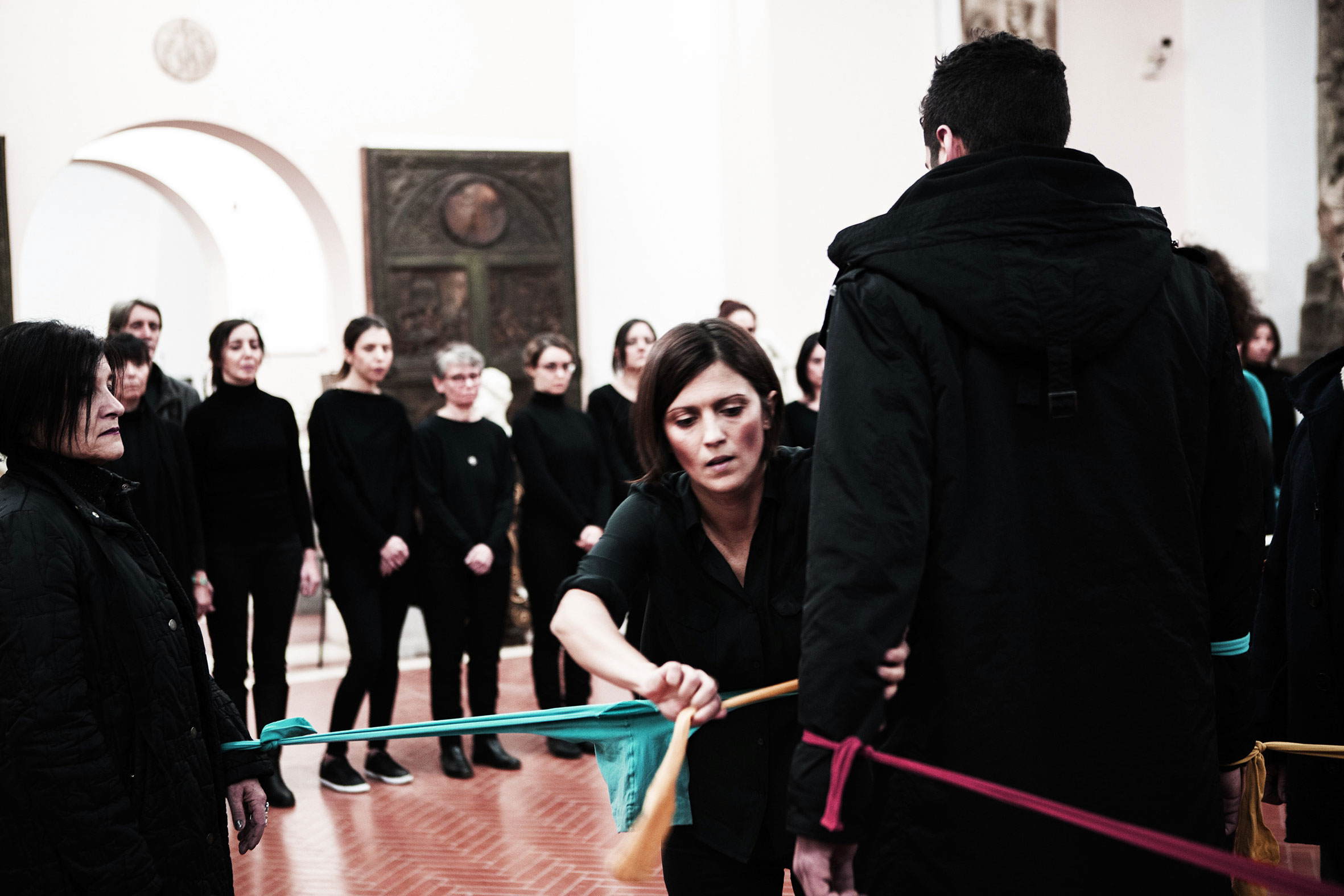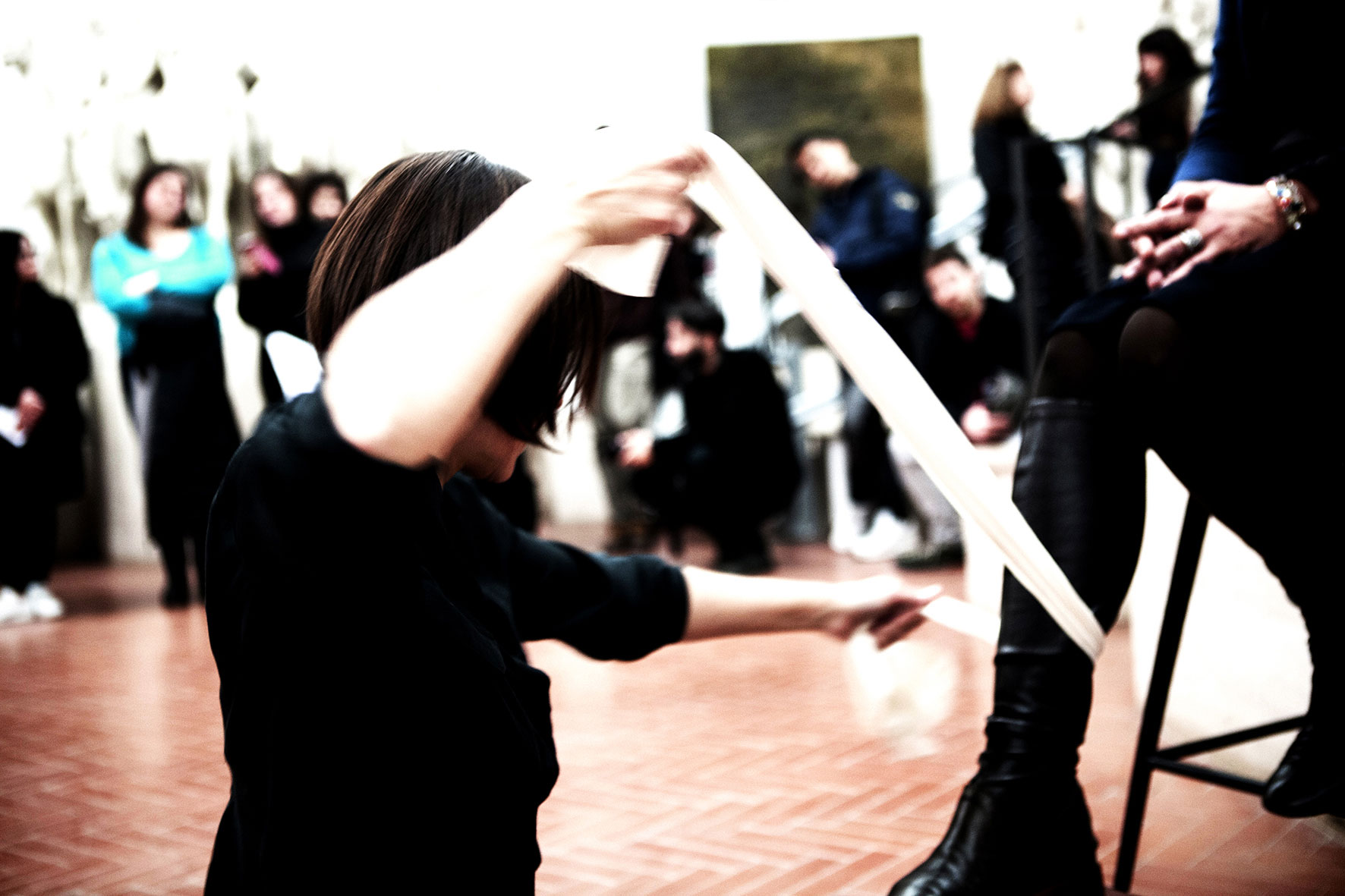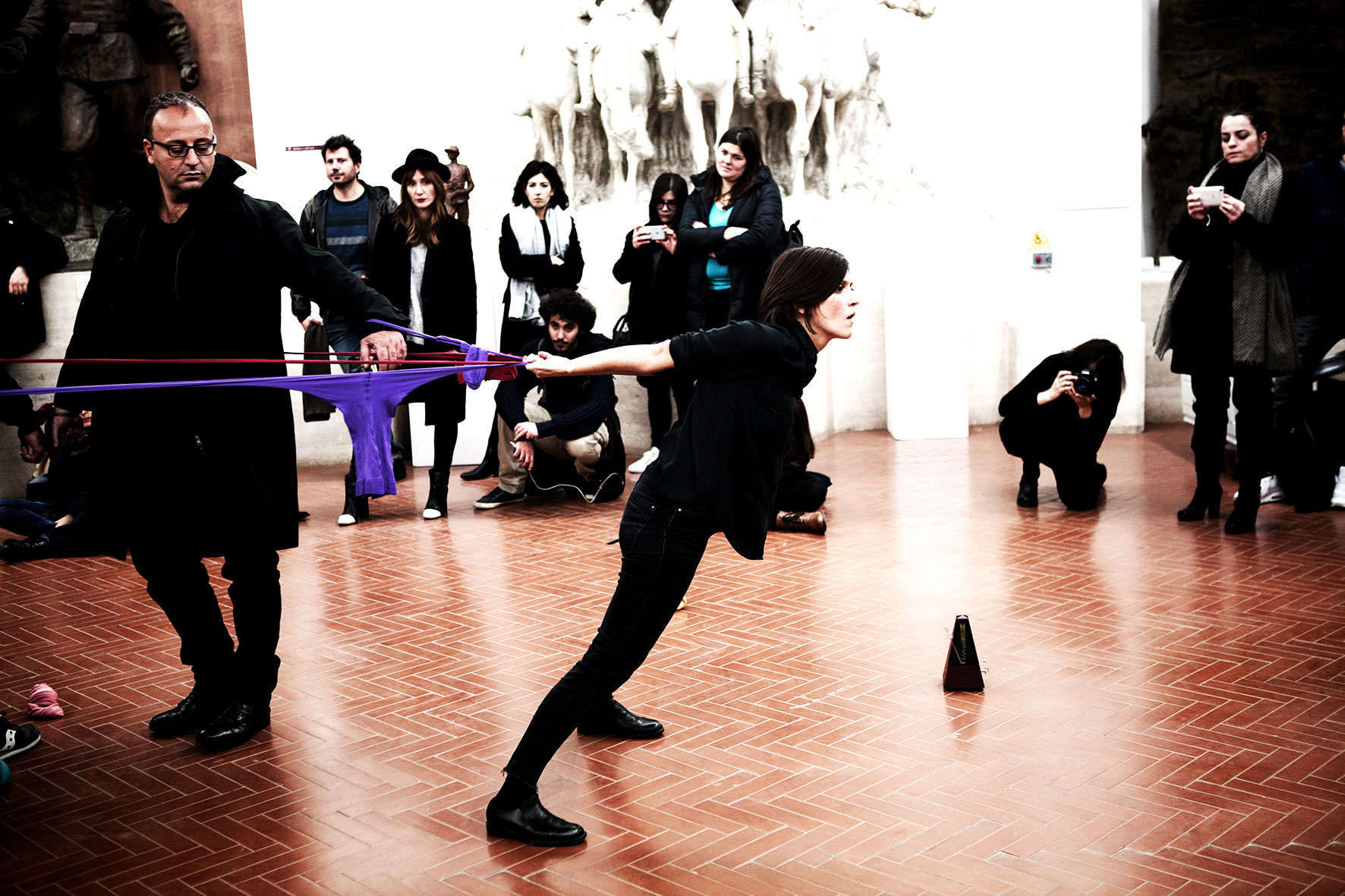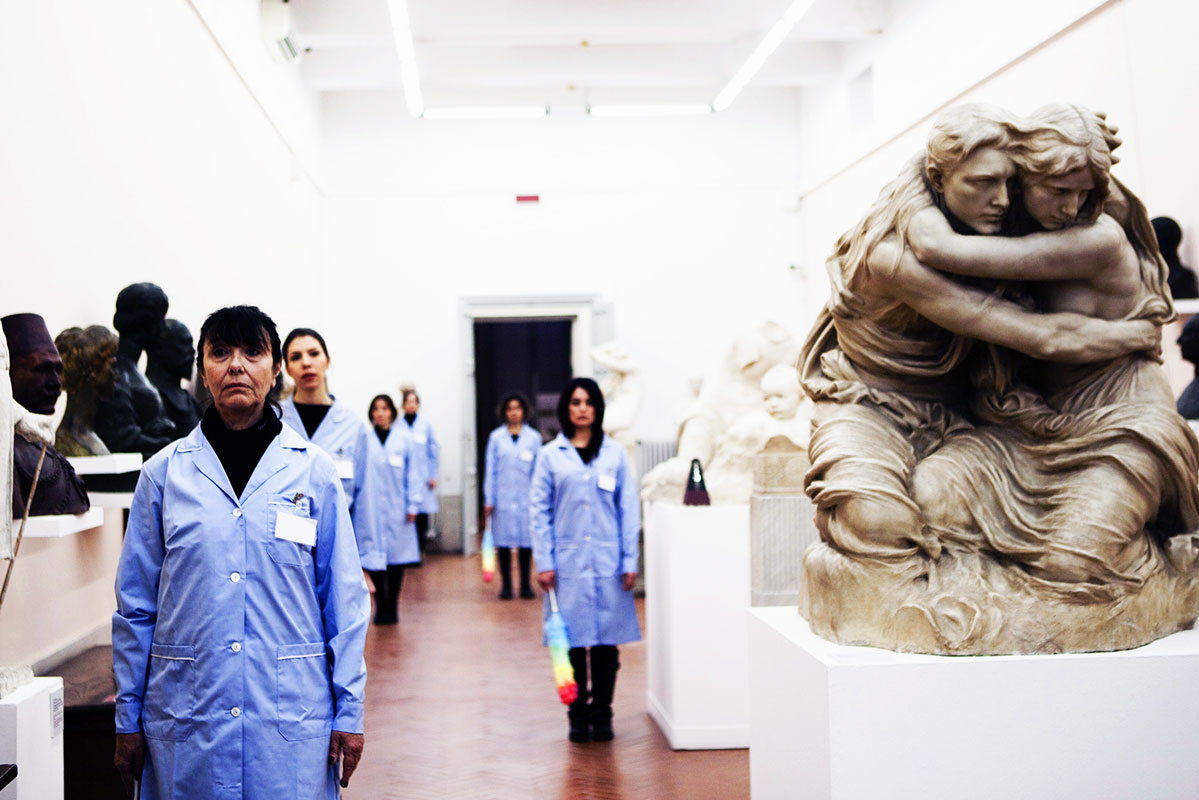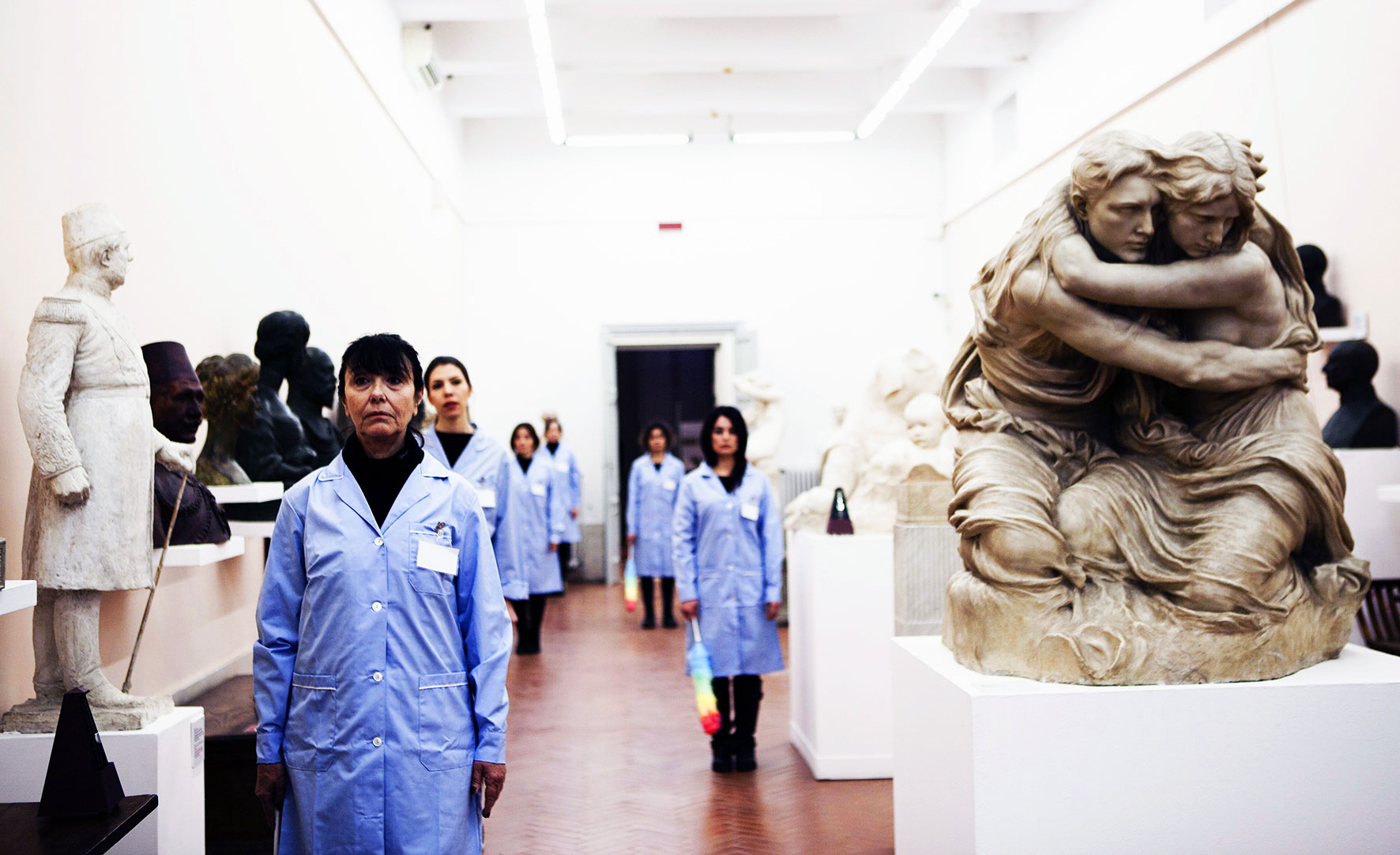
La Lucidatrice
2017
Performance e video
Installazione con gambe e collant
Serie di 10 fotografie, Hahnemühl paper Museo Pietro Canonica, Roma
Se ogni relazione è fondata su un patto, ovvero su un vincolo o su un contratto, che stabilisce le regole di un gioco a cui si è chiamati e ci si chiama a rispondere, La Lucidatrice è l’invito, al contempo serio e ironico, a instaurare un rapporto “a tempo determinato” con l’arte.
Questo rapporto avviene attraverso l’esplorazione attiva delle due posizioni di potere coinvolte: che sia l’arte a servizio di chi l’osserva, o sia chi l’osserva a suo servizio, e di come l’artista agisca sempre entrambi i ruoli contemporaneamente.
In un primo tempo quindici metronomi collocati nello spazio del Museo Pietro Canonica di Roma, hanno scandito sonoramente il “potere” del pubblico di innescare l’azione artistica di quindici donne performer – le lucidatrici –, consistente nella pulizia delle statue del Museo raffiguranti figure femminili, o, al contrario, di lasciarle nella totale inazione. Nello stesso momento nell’ultima sala, attingendo a istruzioni di tradizione familiare, ho lucidato in silenzio le scarpe del pubblico con dei collant da donna.
Alla base c’è però un patto fondato su uno scambio: chi usufruisce del “servizio” artistico doveva rendersi disponibile, secondo le regole consegnategli all’ingresso, a trattenersi nello spazio. Io, in quanto artista, ho potuto da quel momento rivendicare l’Altro, ricevere in cambio il suo tempo, per comporre un’installazione “viva” al battere di un tempo finale determinato dal mio metronomo e dal mio stesso agire.
The Polisher
2017
Performance and video
Installation with mannequin legs and tights
Series of 10 photographs, Hahnemühle paper, Museo Pietro Canonica, Rome
If every relationship is based on a pact—that is, a bond or a contract establishing the rules of a game to which one is both called and calls others to respond—The Polisher is both a serious and ironic invitation to enter into a “fixed-term” relationship with art.
This relationship is explored through the active investigation of the two positions of power involved: whether art serves the viewer, or the viewer serves the art—and how the artist inevitably performs both roles at once.
At first, fifteen metronomes placed throughout the Museo Pietro Canonica in Rome audibly marked the public’s “power” to initiate the artistic action of fifteen female performers—the polishers—whose task was to clean the museum’s statues depicting female figures, or, conversely, to leave them untouched in total inaction.
Meanwhile, in the final room, drawing from traditional family instructions, I silently polished the audience’s shoes using women’s tights.
At the core of the work lies a pact based on exchange: those who benefited from the artistic “service” had to commit, under the rules provided upon entry, to remaining within the space. As the artist, I could from that moment claim the Other, receiving their time in return, to compose a “living” installation dictated by the beat of a final moment, set by my metronome and by my own action.
